
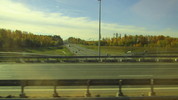
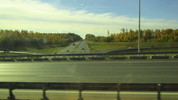
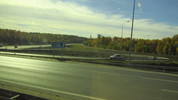
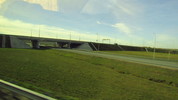
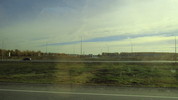
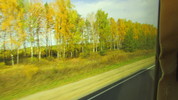

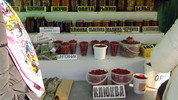
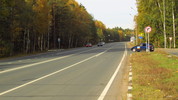
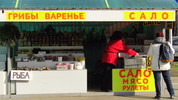
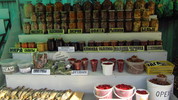
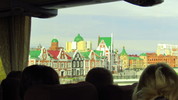
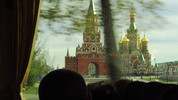
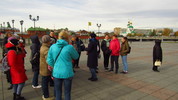

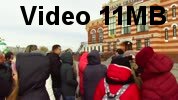
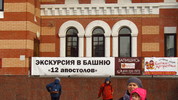
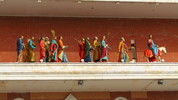
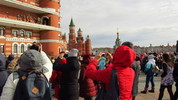
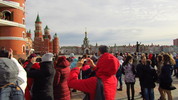


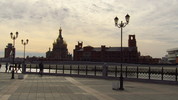
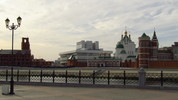
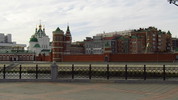
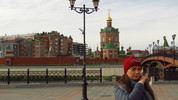


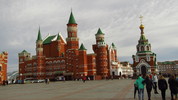

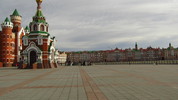
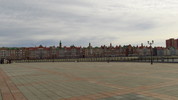
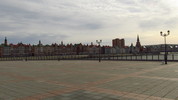
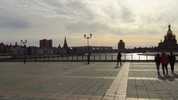
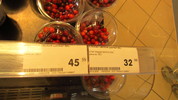



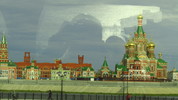


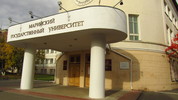
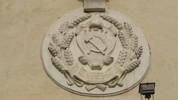


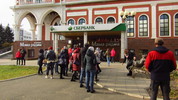
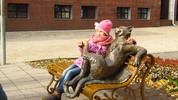
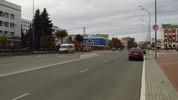
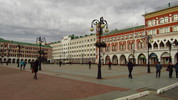
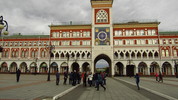
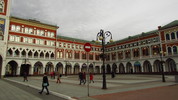
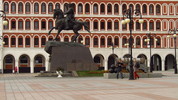





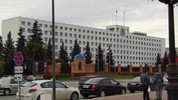
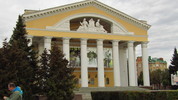
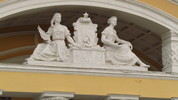
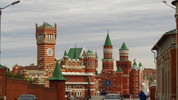

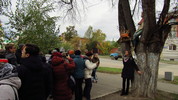
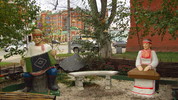
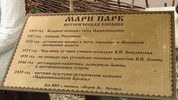
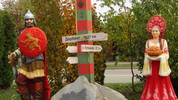
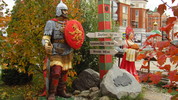
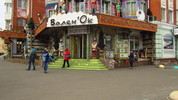
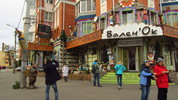


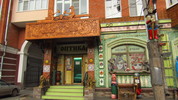

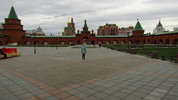
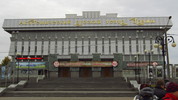
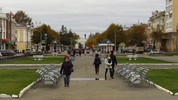


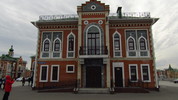

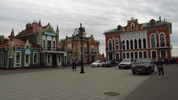


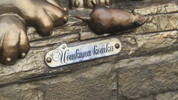
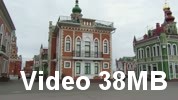
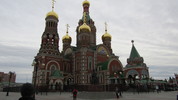

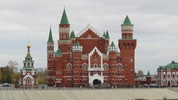


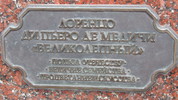

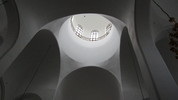

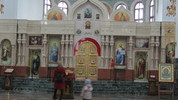
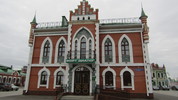

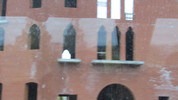
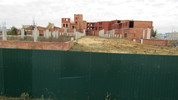
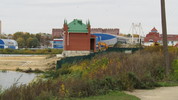
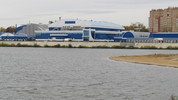

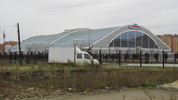

Until 2009, Yoshkar-Ola, 270 thousand inhabitants, was probably a unimpressive provincial town with mostly undeveloped area along the banks of the Malaya Kokshaga river passing through it, that were being flooded every year. The appearance of the area along the river has radically changed in the past 9 years: the river was contained within high concrete banks, a large reservoir was created, and all the new water fronts were being filled with new buildings in fairytale pseudo-styles inspired by places from all over Europe. So there is now a children's puppet theatre in the form of a medieval Bavarian castle, a long Brugge Embankment, a square inspired by Venice' Piazza San Marco, and two tower clocks showing processions of apostles on every hour, walking/riding on the outside (a competition to the famous Prague astronomical clock? - at least the crowds of tourists are gathering in front of these clocks in the same way as in Prague). Some buildings are still unfinished. All this boom was apparently the idea of the former head of the republic, whom the local residents seem to be still grateful for what he did for the city, in spite of the fact that he has been imprisoned in a remand centre in Moscow where he is being investigated for allegedly taking a huge bribe. And in spite of that the Wikipedia article on him claims that Mari El budget deficit kept mushrooming under his watch, and there were human rights allegations against him.
(Click on each picture to open the full size photo.)
 |
 |
 |
 |
 |
 |
 |
 |
 |
 |
 |
 |
 |
 |
 |
 |
 |
 |
 |
 |
 |
 |
 |
 |
 |
 |
 |
 |
 |
 |
 |
 |
 |
 |
 |
 |
 |
 |
 |
 |
 |
 |
 |
 |
 |
 |
 |
 |
 |
 |
 |
 |
 |
 |
 |
 |
 |
 |
 |
 |
 |
 |
 |
 |
 |
 |
 |
 |
 |
 |
 |
 |
 |
 |
 |
 |
 |
 |
 |
 |
 |
 |
 |
 |
 |
 |
 |
 |
 |
 |
 |
 |
 |
 |
 |
 |
 |
 |
 |
 |
 |
 |
 |
 |
 |